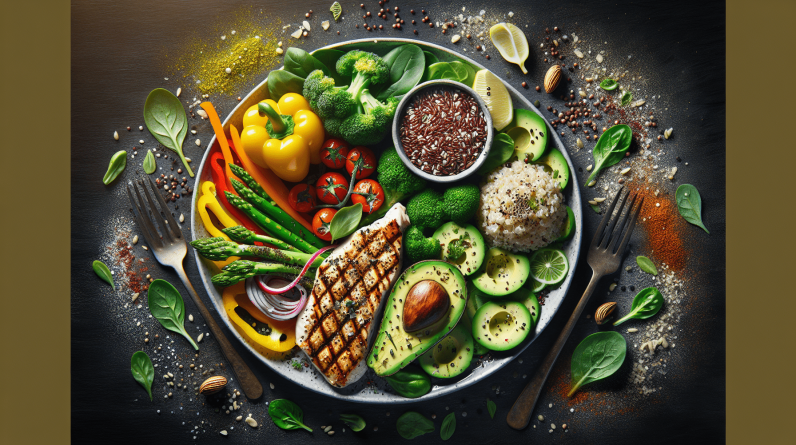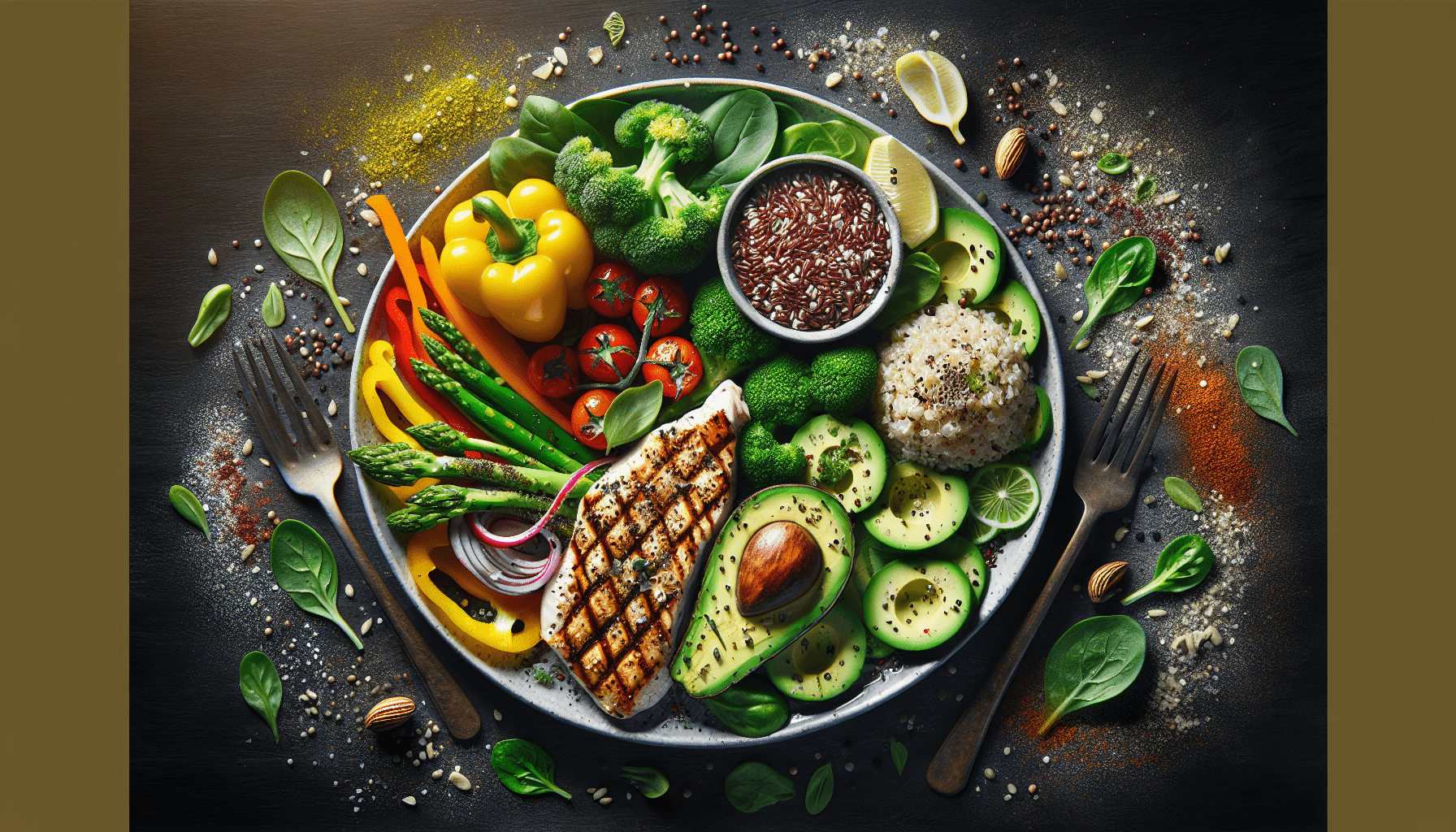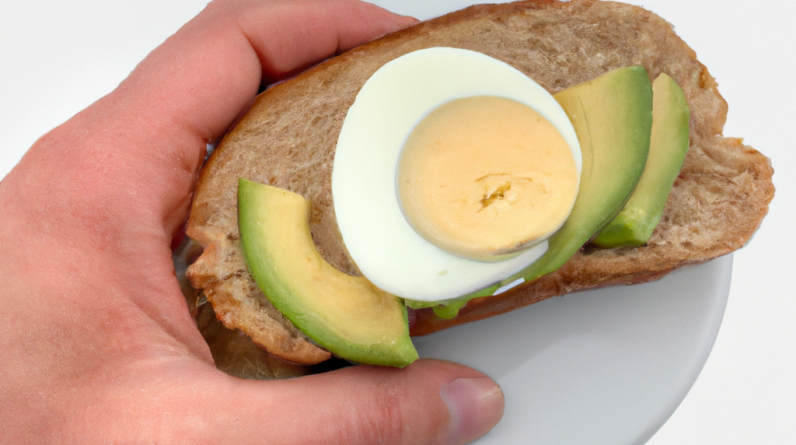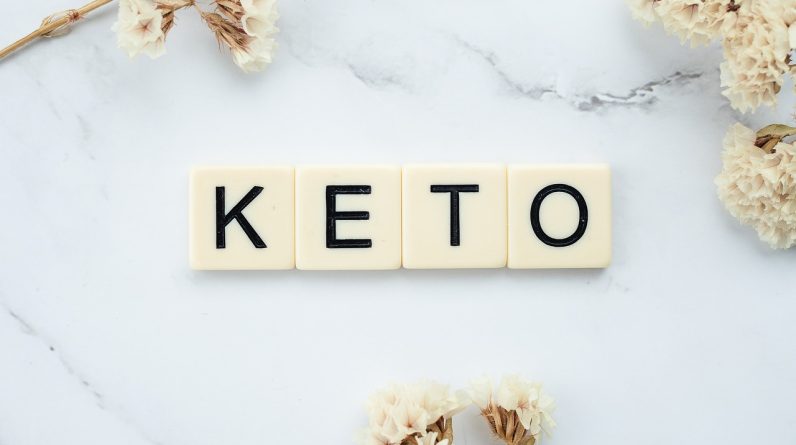
Have you ever wondered what it takes to effectively manage your weight while ensuring you get all the nutrients your body needs? If so, you’re not alone. Many people struggle to balance weight loss with proper nutrition. Fortunately, healthy meal plans can be the perfect solution. In this article, we will explore meal plans tailored for weight loss, showing you how to align your nutrition goals with delicious and satisfying food choices.

Understanding the Basics of Weight Loss
Before diving into the specifics of meal plans, it’s crucial to understand the underlying principles of weight loss. Essentially, weight loss occurs when you consume fewer calories than your body needs to maintain its current weight. This is known as creating a calorie deficit. Your body then turns to stored fat for energy, leading to weight loss.
Calorie Deficit
A calorie deficit is the foundation of any effective weight loss plan. To create a calorie deficit, you have two options: eat fewer calories or increase your physical activity. Ideally, combining both can yield the best results.
Macronutrients
Your body needs macronutrients—proteins, carbohydrates, and fats—in certain proportions to function optimally. Balancing these macronutrients is essential for both weight loss and overall health.
| Macronutrient | Function | Examples |
|---|---|---|
| Protein | Builds and repairs tissues, supports immune function | Chicken, fish, tofu, legumes |
| Carbohydrates | Main energy source, fuels brain and muscles | Whole grains, fruits, vegetables |
| Fats | Supports cell structure, nutrient absorption, and hormone production | Avocado, nuts, seeds, olive oil |
Setting Your Goals
Just as with any journey, knowing your destination is crucial. Setting specific, realistic goals can help you stay focused and motivated.
Determine Your Calorie Needs
Your daily calorie needs depend on several factors, including age, sex, weight, height, and physical activity level. There are numerous online calculators that can help you estimate your baseline calorie requirements. From there, you can determine how many calories to cut or how much exercise to add to create a calorie deficit.
Set Realistic Weight Loss Goals
Aim for sustainable and realistic weight loss goals. Generally, losing 1 to 2 pounds per week is considered safe and sustainable. Rapid weight loss can lead to muscle loss, nutritional deficiencies, and other health issues.
Personalize Your Plan
Your meal plan should reflect your individual preferences and lifestyle. There’s no one-size-fits-all approach to weight loss; find a plan that works for you.
Structuring Your Meals
A well-structured meal plan ensures you get a balanced intake of macronutrients while staying within your calorie limits. Let’s dive into how to plan your meals effectively.
Breakfast
Breakfast is considered the most important meal of the day for a reason. A nutritious breakfast can kickstart your metabolism and set the tone for the day. Aim for a mix of protein, healthy fats, and complex carbohydrates.
Example Breakfast Plan:
| Food Item | Portion Size | Calories |
|---|---|---|
| Greek Yogurt | 1 cup | 100 |
| Berries | 1/2 cup | 30 |
| Whole Wheat Toast | 1 slice | 70 |
| Almond Butter | 1 tbsp | 90 |
Lunch
Lunch should be a wholesome meal that keeps you full and energized through the afternoon. Include lean proteins, whole grains, and plenty of vegetables.
Example Lunch Plan:
| Food Item | Portion Size | Calories |
|---|---|---|
| Grilled Chicken | 3 oz | 130 |
| Quinoa | 1 cup | 120 |
| Steamed Broccoli | 1 cup | 55 |
| Olive Oil | 1 tbsp | 120 |
Dinner
Dinner is your chance to wind down with a balanced meal that complements your day’s nutritional intake. Focus on lean proteins, vegetables, and a small portion of healthy fats.
Example Dinner Plan:
| Food Item | Portion Size | Calories |
|---|---|---|
| Baked Salmon | 3 oz | 180 |
| Sweet Potatoes | 1 medium | 100 |
| Mixed Vegetables | 1 cup | 50 |
| Olive Oil | 1 tbsp | 120 |
Snacks
Healthy snacks can prevent overeating during meal times and keep your energy levels stable. Opt for nutrient-dense, low-calorie options.
Example Snacks:
| Food Item | Portion Size | Calories |
|---|---|---|
| Apple | 1 medium | 95 |
| Carrot Sticks | 1 cup | 50 |
| Hummus | 2 tbsp | 70 |
| Almonds | 10 almonds | 70 |
Meal Preparation and Planning
Effective meal planning and preparation can make sticking to your meal plan much easier. Spending a little time each week planning your meals can save you time and keep you on track.
Plan Ahead
Reserve a specific time each week to plan your meals. Write down what you’ll eat for breakfast, lunch, dinner, and snacks. Make a shopping list based on your plan to ensure you have all the necessary ingredients.
Meal Prep Tips
- Batch Cooking: Cook large quantities of staple foods like grains, proteins, and vegetables. Portion them out for the week.
- Utilize Storage Containers: Invest in a variety of storage containers to keep your prepped food fresh.
- Keep Healthy Snacks on Hand: Prepare snacks like sliced veggies, fruits, or nuts in advance, so they’re readily available.
- Use a Slow Cooker or Instant Pot: These tools can make cooking healthy meals easier and less time-consuming.
Choosing Nutrient-Dense Foods
Selecting nutrient-dense foods ensures that every calorie you consume is packed with vitamins and minerals, rather than empty calories from processed foods.
Whole Grains
Whole grains are an excellent source of fiber, which can help keep you feeling full and satisfied. Examples include brown rice, quinoa, oatmeal, and whole wheat bread.
Lean Proteins
Lean proteins support muscle growth and repair while helping to keep you full. Great options are chicken breast, fish, tofu, and legumes.
Vegetables
Vegetables are low in calories but high in vitamins, minerals, and fiber. Aim to fill half your plate with a variety of colorful vegetables at each meal.
Healthy Fats
Healthy fats from sources like avocados, nuts, seeds, and olive oil can support cell function and nutrient absorption. Just be mindful of portion sizes, as fats are calorie-dense.
Fruits
Fruits are naturally sweet and provide essential vitamins, minerals, and fiber. Opt for whole fruits over fruit juices to maximize nutritional benefits.
Hydration and Its Role in Weight Loss
Staying hydrated is a vital component of weight loss. Water supports your metabolism, helps control hunger, and improves overall bodily functions.
How Much Water Do You Need?
A general guideline is to aim for at least 8 cups (64 ounces) of water a day, but individual needs can vary based on factors like activity level, climate, and overall health.
Tips to Stay Hydrated
- Carry a Water Bottle: Always have a water bottle with you to make drinking water more convenient.
- Set Reminders: Use your phone or a hydration app to remind you to drink water throughout the day.
- Flavor Your Water: Add slices of lemon, cucumber, or berries to your water to enhance the flavor.
- Drink Before Meals: Having a glass of water before meals can help control hunger and prevent overeating.
Exercise and Weight Loss
While nutrition plays a significant role in weight loss, incorporating physical activity can enhance your results and boost overall health.
Types of Exercise
- Cardio: Activities like walking, running, cycling, and swimming can help burn calories and improve heart health.
- Strength Training: Building muscle through strength training can boost your metabolism and promote fat loss.
- Flexibility and Balance: Practices like yoga and stretching can improve flexibility and reduce injury risk.
Creating a Balanced Exercise Routine
Aim to incorporate a mix of cardio, strength training, and flexibility exercises into your weekly routine. A balanced approach ensures you reap the benefits of different types of physical activity.
Staying Motivated
Find activities you enjoy and set achievable fitness goals. Working out with a friend or joining a fitness class can also boost motivation and make exercise more enjoyable.
Monitoring Progress
Tracking your progress can help you stay accountable and understand what works best for your body.
Keep a Food Journal
Tracking what you eat can provide insights into your eating habits and help you identify areas for improvement. You can use apps like MyFitnessPal or simply jot down your meals in a notebook.
Monitor Physical Changes
Take measurements of your body (such as waist, hips, and chest) and periodically check your progress. Weight can fluctuate due to various factors, so measurements can provide a more accurate picture of your progress.
Reflect on Your Journey
Periodically reflect on your goals, challenges, and successes. This can help you stay motivated and adjust your plan as needed.
Overcoming Challenges
Weight loss journeys come with their set of challenges, but being prepared can help you navigate them successfully.
Managing Cravings
- Identify Triggers: Understand what triggers your cravings and find healthier alternatives.
- Moderation: Allow yourself occasional treats in moderation to prevent feelings of deprivation.
- Healthy Alternatives: Find healthier versions of your favorite foods to satisfy cravings without derailing your diet.
Eating Out
Eating out can be challenging, but with some strategies, you can make healthier choices.
- Plan Ahead: Look at the menu beforehand and choose healthier options.
- Ask for Modifications: Don’t hesitate to ask for modifications like dressing on the side or substituting fries with a salad.
- Control Portions: Consider sharing a dish or taking half of your meal to go.
Dealing with Plateaus
Experiencing a weight loss plateau is common, but it doesn’t mean you’re failing.
- Reassess Your Plan: Review your meal plan and exercise routine. Small adjustments can break the plateau.
- Increase Physical Activity: Adding more or varying your workouts can boost your calorie burn.
- Stay Positive: Focus on non-scale victories like improved energy, better sleep, and increased fitness levels.
Importance of Support
Having a support system can make a significant difference in your weight loss journey.
Seek Professional Guidance
Registered dietitians, nutritionists, and personal trainers can provide personalized advice and support.
Join a Community
Weight loss communities, whether online or in-person, offer a platform to share experiences, gain motivation, and feel less isolated in your journey.
Communicate with Loved Ones
Sharing your goals with friends and family can provide emotional support and accountability. They may also join in your healthy lifestyle changes.
Maintaining Your Weight Loss
Losing weight is just the beginning; maintaining it requires a long-term commitment to healthy habits.
Make Sustainable Changes
Adopt changes that you can maintain in the long run. Drastic diets may show quick results, but sustainable habits lead to lasting success.
Continue Monitoring
Keep track of your eating habits, physical activity, and weight regularly. This can help you stay on top of your goals and make adjustments as needed.
Celebrate Your Success
Take time to celebrate your achievements and milestones. This not only boosts morale but also reinforces your commitment to a healthy lifestyle.
In summary, creating healthy meal plans for weight loss involves understanding the basics of weight loss, setting realistic goals, and structuring your meals to balance macronutrients. Incorporating regular physical activity, choosing nutrient-dense foods, staying hydrated, and seeking support can further enhance your weight loss journey. Remember, it’s about making sustainable, long-term changes to achieve and maintain your desired weight while enjoying a balanced and fulfilling diet.







